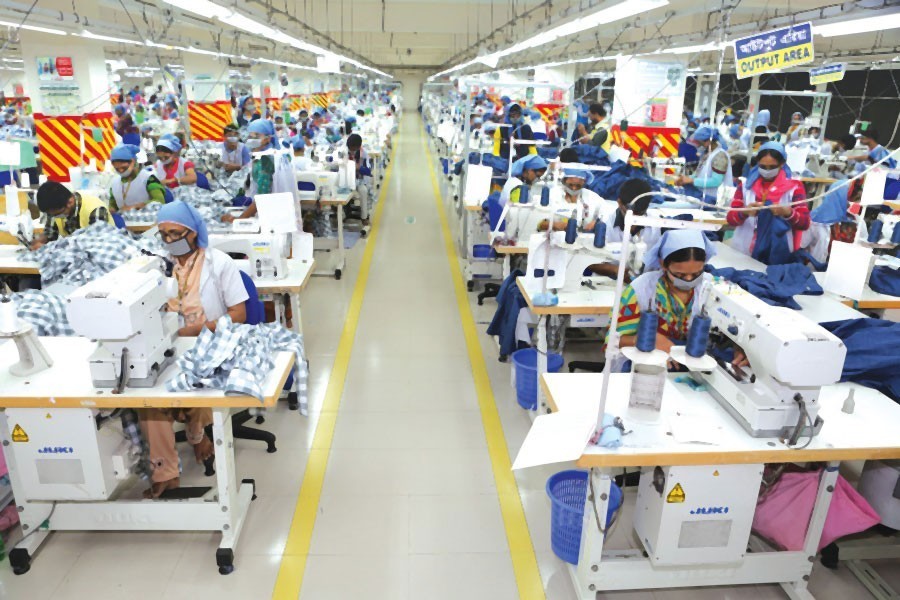Now that most of the targeted jobs associated with remediation of garment factories are almost over or nearing completion, there is obviously a sense of satisfaction, if not complacency, that things brought in order for well over four years will make exporting smooth, beside ensuring workplace safety. However, there is still something unsettling about the matter when it comes to the large number of factories which are not exporters themselves, and hence left out of the remediation programme initiated by the two buyers' representatives -- Alliance and Accord to be followed subsequently by a national initiative. These factories are mostly engaged in subcontracting for the exporting units, and constitute a crucial component of the country's apparel manufacturing and exporting process.
While the prevailing state of the subcontracting units are more or less well known to all concerned, especially about their working conditions and the looming safety threats, a recent study done by the Stern Centre for Business and Human Rights of the New York University has highlighted some critical aspects focusing as well on the costs required for remediation.
The report said some 7,000 factories -- including garment, textile, dying and washing units -- are operating across the country and around 3,000 of them are subcontracting units. The remaining 4,000 factories are currently overseen under three initiatives - two foreign and one local. The foreign initiatives - the Accord and the Alliance - have improved the conditions in about 2,300 factories serving their member companies in Europe and the USA, while the Bangladesh government at its own initiative monitors another 1,650 factories.
The report proposed for forming a multi-stakeholder taskforce to fund and oversee the remediation efforts in those factories and subcontracting units where safety issue still remains a cause for concern. The report titled 'Five Years After Rana Plaza: The Way Forward' found that many garment factories are now safer following the initiatives sponsored by Western apparel brands and retailers. The moves have made a difference in about 2,300 factories employing some 2.0 million workers. "While there has been great progress in many of the largest and best factories, workers in thousands of subcontracting factories, many of them young women, continue to work under unacceptably dangerous conditions," said Michael Posner, director of the NYU Stern Centre.
The report said many of the factories that so far have not been remediated, cannot afford expensive safety improvements on their own. They lack direct relationships with Western brands and retailers, it said, adding that their margins are often slimmer than those of the Accord/Alliance suppliers. Because of their unstable financial profiles, they do not have access to local bank loans, and without outside aid in the form of grants or low-interest loans, these factories will not get safer, the report said. "This reality motivates our determination to raise a substantial fund to be distributed by a task force to those most in need. We approach this effort from the perspective of workers whose safety will be compromised until improvements are made," the Centre said. It estimated dollar value for National Initiative remediation at $413 million, and $750 million for remediation in 3,000 sub-contracting units.
Noting the urgent need for remediation of the subcontracting factories, which are otherwise equipped in manufacturing various categories of garments and contributes remarkably to exports by feeding the direct-exporting units, the report makes a strong point as to the role expected from the Western governments in general. "Western consumers are the beneficiaries of the cheap clothes produced in Bangladesh. Therefore, it is incumbent on Western brands and retailers, as well as Western governments, to step up to the plate," said Mr Posner.
The NYU Stern Center proposed $1.2 billion 'shared responsibility' model in which the government of Bangladesh and local suppliers should invite Western governments, brands and retailers, the World Bank and other development partners and foundations to participate in a taskforce to undertake a census of the factories, assess the financial costs of fixing safety gaps and contribute to a fund to help meet this need.
Industry insiders, however, are not in agreement with the number of factories left out of remediation scheme mentioned in the report. The government also differs on the number. The common view of the government as well as of the garment sector leaders is that the figure is inflated and this might have been due to inclusion of all types of garment producing units in the list, a good number of which might not be associated with subcontracting, and are likely to be tiny units with some production facilities for local consumption. In the absence of data, it is not possible to verify authenticity of the statement.
Whatever the exact number, the fact remains that garment manufacturing in the country (subcontracting for exporting factories) is still going on in unsafe workplaces. The government's own initiative that has been tasked to take care of the factories not under the purview of either Alliance or Accord has to move faster. A comprehensive survey of all factories - remediated or not - should immediately focus on the future course of action. In this context, the recommendation of the report for forming a taskforce in collaboration with development partners and donor governments should not be trashed as hogwash.


